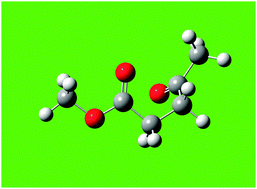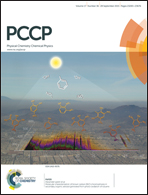Theoretical kinetic study for methyl levulinate: oxidation by OH and CH3 radicals and further unimolecular decomposition pathways†
Abstract
Biofuels may represent a promising alternative in terms of energy sustainability and emission control. Until recently, simple compounds including only a single specific functional group was in the focus of the biofuel research while reported data on more complex structures are scarcer. Presence of multiple functional groups can make molecules more attractive for oxidative species providing attacking site for fast oxidation. Including both a carbonyl and an ester group, methyl levulinate (ML) can be such an excellent biofuel candidate due to its cellulosic origin, although its combustion kinetics is still unresolved. This work reports the first computational kinetic study on methyl levulinate oxidation relevant to combustion conditions. Absolute rate constants for H-abstraction reactions by OH and CH3 radicals were calculated using the G3//MP2/aug-cc-pVDZ level of theory coupled with Transition State Theory (TST). The fate of the forming ML radicals was also investigated by computing absolute rate constants for β-scission as well as for H-transfer reactions. The outcomes of this work show that the sites between the two functional groups are the most favorable for H-abstraction reactions, and that methyl vinyl ketone (MVK) and methyl acrylate (MAC) are expected to be the main intermediate products of methyl levulinate oxidation. The present results will be useful for further detailed kinetic modeling.



 Please wait while we load your content...
Please wait while we load your content...